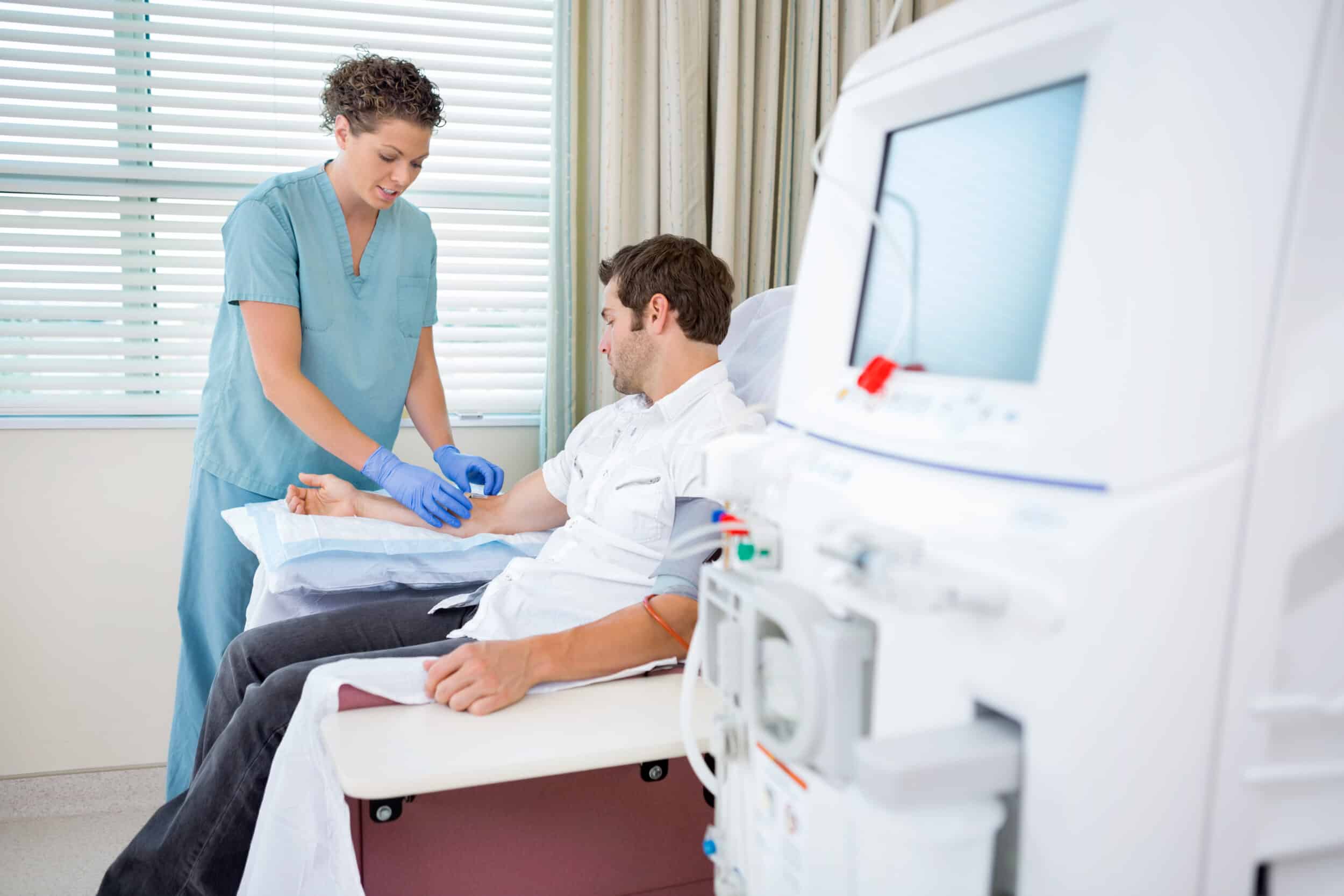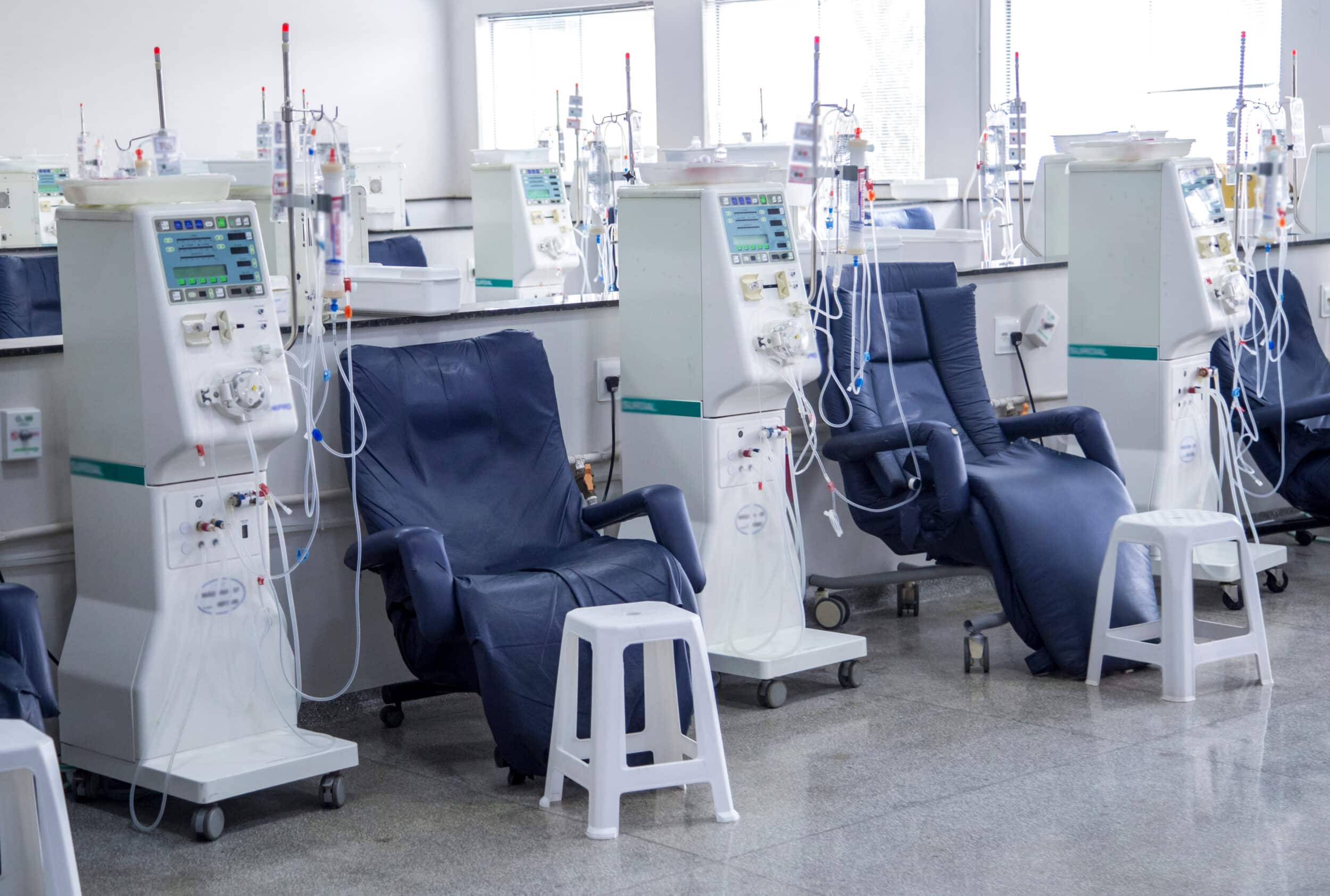Dialysis access is a critical aspect of managing kidney failure. Whether through hemodialysis or peritoneal dialysis, successful treatment depends on having safe and consistent access to the bloodstream or abdominal cavity.
At Suffolk Vascular & Vein Center, we understand the importance of reliable dialysis access for individuals living with advanced kidney disease and have provided comprehensive care for over 25 years. Building on this experience, we also offer high-quality care in our fully accredited, office-based interventional suites.

Types of Dialysis Access
Selecting the right type of access supports your long-term health and ensures the effectiveness of your dialysis plan. Here are some of the different options available.
Arteriovenous (AV) Fistula
An AV fistula involves surgically connecting an artery to a vein, usually in the forearm. This connection strengthens the vein and makes it suitable for repeated needle insertions during dialysis sessions.
Arteriovenous (AV) Graft
An AV graft involves using a synthetic tube to connect an artery and a vein. This approach is recommended when a patient’s veins are too small or weak for a fistula.
Central Venous Catheter (CVC) for Dialysis
A CVC is inserted into a large vein in the neck, chest, or groin and is often used as a temporary solution while a fistula or graft heals. The goal is typically to transition from a catheter to a fistula or graft as soon as possible.
Peritoneal Dialysis Catheter
This catheter allows for home-based peritoneal dialysis by providing access to the abdominal cavity. The catheter is surgically placed and requires careful maintenance to avoid infections like peritonitis.
Dialysis Access Placement: What to Expect
Before access placement, patients will receive instructions on how to prepare, which may include fasting and pausing certain drugs (such as blood thinners, NSAIDs, and some diabetes medications).
During the procedure, local or general anesthesia is used based on the type of access being placed. Your provider may use ultrasound or X-ray imaging to guide the placement and confirm the correct positioning. In many cases, a small incision is made to create a connection between vessels or to place the catheter securely. The area is then closed and dressed.

Recovery varies by access type but usually includes rest, limited activity for a few days, and close monitoring of the site.
Caring for Your Dialysis Access
Daily care is essential to maintaining access function and preventing complications. Patients should clean the access site daily, avoid applying pressure or injuring the area, and check for signs such as redness, swelling, or drainage. To prevent infections and blockages, follow your provider’s instructions closely and notify them if any issues arise.
Schedule a Consultation Today
At Suffolk Vascular & Vein Center, our skilled team is here to offer guidance on everything from selecting the best dialysis access option to placement, care, and long-term management. We strive to provide safe, high-quality treatment in a comfortable outpatient setting.
Contact us today to learn more or schedule a consultation. You can reach us at any of our three locations: Port Jefferson Station (631-476-9100), Hauppauge (631-979-0222), or Riverhead (631-591-9003).

